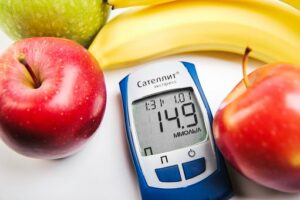Diabetes is a chronic condition characterized by high levels of sugar (glucose) in the blood. The two main types of diabetes are type 1 and type 2. Type 1 diabetes is an autoimmune disease in which the body’s immune system attacks and destroys the cells that produce insulin, a hormone that regulates blood sugar levels. Type 2 diabetes, on the other hand, is a metabolic disorder in which the body becomes resistant to insulin or doesn’t produce enough of it to keep blood sugar levels in check.
Symptoms of Diabetes
Symptoms of diabetes can vary depending on the type and severity of the condition, but some common signs include:
Increased thirst and frequent urination: When there is too much sugar in the blood, the body tries to flush it out through the urine. This can lead to dehydration, causing you to feel thirstier than usual and need to urinate more frequently.
Fatigue: High blood sugar levels can interfere with the body’s ability to use energy, causing you to feel tired and fatigued.
Blurred vision: High blood sugar levels can cause the lens of the eye to swell, leading to blurred vision.
Slow healing of cuts and wounds: High blood sugar levels can affect the body’s ability to heal, leading to slow healing of cuts and wounds.
Dry, itchy skin: High blood sugar levels can lead to dryness and itching of the skin.
Frequent infections: High blood sugar levels can weaken the immune system, making you more susceptible to infections.
If left untreated, diabetes can lead to serious complications such as heart disease, nerve damage, blindness, kidney damage, and amputation. Therefore, it is important to seek medical treatment as soon as possible if you suspect you may have diabetes.
Treatment for Diabetes
Treatment for diabetes typically involves a combination of lifestyle changes and medication. Some common treatment options include:
Diet and exercise: Maintaining a healthy diet and getting regular exercise can help manage blood sugar levels and prevent complications.
Medication: There are several types of medications that can help manage blood sugar levels, including insulin injections, oral medications, and insulin pumps. The type of medication that is right for you will depend on your individual needs and the severity of your condition.
Continuous glucose monitoring: This involves wearing a small device that continuously measures your blood sugar levels and alerts you if they get too high or too low.
Insulin pumps: An insulin pump is a small device that delivers insulin through a small tube that is inserted under the skin. The pump is programmed to deliver a continuous supply of insulin, as well as additional doses as needed.
In addition to these treatment options, it is important to see your healthcare provider regularly to monitor your blood sugar levels and assess your treatment plan. By working with your healthcare team, you can learn how to manage your diabetes and reduce your risk of complications.

 Home
Home Health
Health Diet & Nutrition
Diet & Nutrition Living Well
Living Well More
More












